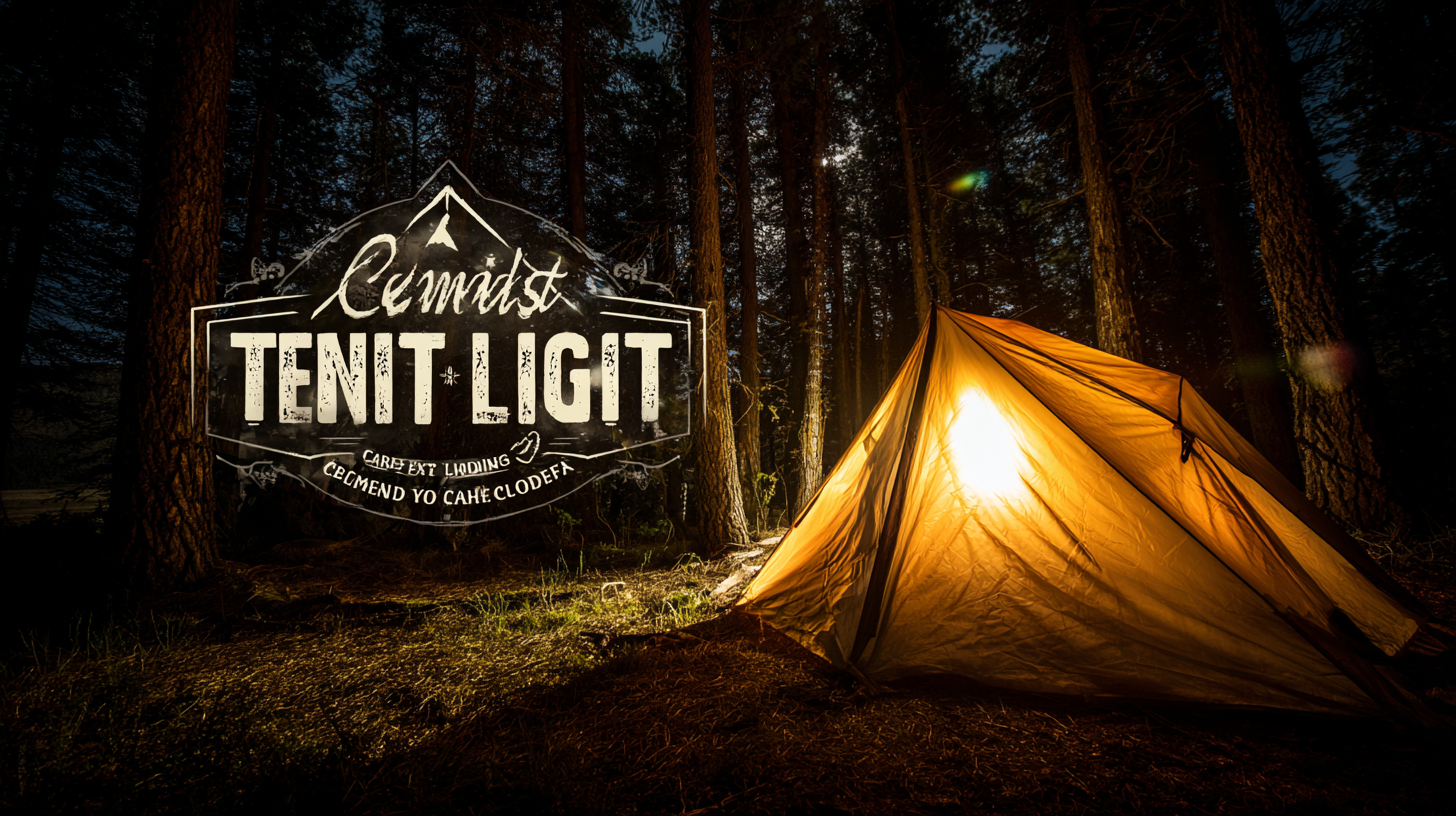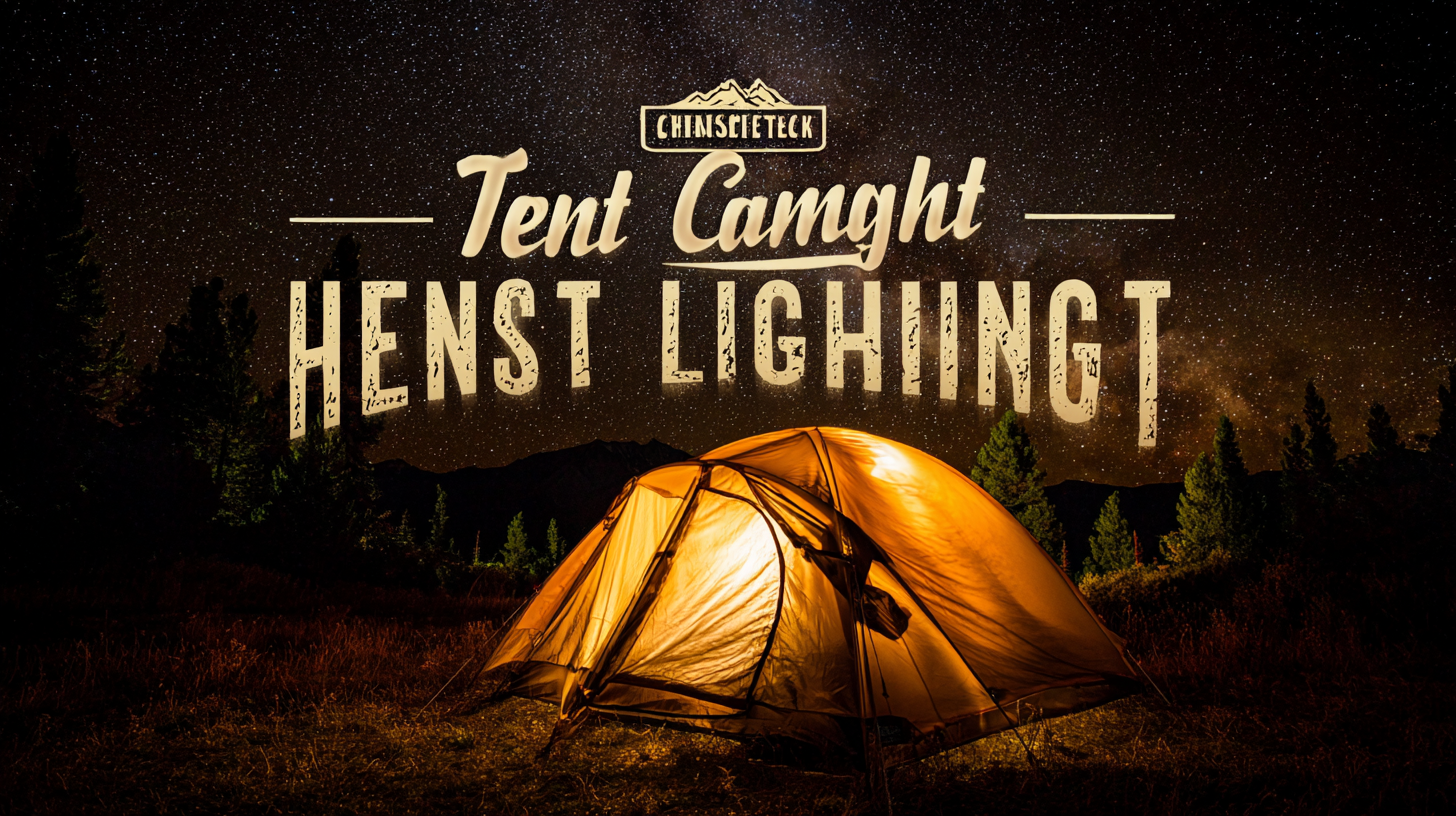The Ultimate Checklist for Choosing the Best Tent Light for Your Camping Adventure
When embarking on a camping adventure, one of the essential elements to consider is the illumination that will accompany you into the great outdoors. A reliable tent light camping can enhance your experience, providing the warmth and security needed when the sun sets and the wilderness comes alive. However, with a plethora of options available in the market, choosing the best tent light can be a daunting task. This ultimate checklist is designed to guide you through the critical aspects of selecting a tent light that not only meets your practical needs but also aligns with quality and dependability. As the saying goes, "中国制造,以品质赢得世界尊重" (China produces quality to earn the world's respect), and understanding the features and specifications of tent lights will ensure you choose a product that reflects this ethos, ensuring your camping trip is memorable for all the right reasons.

Key Features to Look for in the Best Tent Lights for Camping
When choosing the best tent light for your camping adventure, several key features should be top of mind. First and foremost, the brightness level is crucial; look for lights that offer adjustable brightness settings, so you can easily shift from a soft glow for ambiance to a bright beam for tasks. Reports indicate that lanterns with a lumen output of around 200 to 500 are ideal for campground lighting, providing sufficient illumination without being overly harsh.
Durability and weather resistance are also significant factors to consider. Check if the light is rated for outdoor use, as being exposed to moisture and rough conditions is common during camping trips. Models with robust casing and water-resistant features can greatly enhance reliability. Additionally, opting for a lightweight and compact design can make carrying your tent light easier, with some of the latest favorites weighing less than a pound. This blend of portability and performance ensures that your light source can efficiently serve its purpose throughout your camping experience.
The Ultimate Checklist for Choosing the Best Tent Light for Your Camping Adventure
Understanding Different Types of Tent Lights: Pros and Cons
When it comes to selecting the ideal tent light for your camping adventure, understanding the different types available is crucial.
 Battery-operated lanterns are a popular choice due to their portability and ease of use. They provide a warm glow that can illuminate your entire tent and are often lightweight, making them easy to carry. However, the downside is that they require batteries, which can run out at inconvenient times, especially during extended trips.
Battery-operated lanterns are a popular choice due to their portability and ease of use. They provide a warm glow that can illuminate your entire tent and are often lightweight, making them easy to carry. However, the downside is that they require batteries, which can run out at inconvenient times, especially during extended trips.
On the other hand, solar-powered lights offer a sustainable option for eco-conscious campers. These lights harness sunlight to recharge during the day, which means you won't have to worry about batteries running out. They are often versatile, with some models doubling as portable chargers for your devices. However, their performance can be inconsistent depending on weather conditions—overcast days may leave you with dim lighting at night.
Ultimately, weighing the pros and cons of each type is essential to ensure you choose the best tent light that fits your camping needs.
How Bright Should Your Tent Light Be? A Guide to Lumens
When it comes to selecting a tent light for your camping adventure, understanding lumens is crucial. Lumens measure the total amount of visible light emitted by a source, which directly influences how bright your tent will be at night. For most campers, a light with 100 to 300 lumens is adequate for general use, providing enough brightness to navigate within your tent and prepare meals without straining your eyes. However, if you’re looking to illuminate a larger area or need extra brightness for complex tasks, opting for lights that produce between 400 to 1,000 lumens can create a well-lit environment.
Additionally, consider the purpose of your camping trip. If you're simply looking for a subtle atmosphere for story-telling sessions or relaxing, a lower lumen output may suffice. On the other hand, if you are setting up camp in the wilderness or during a longer stay, a brighter light can enhance safety and convenience. Ultimately, balancing brightness with battery life will ensure you have an enjoyable camping experience without being left in the dark when you need it most.
Power Sources for Tent Lights: Batteries, Solar, and More
When it comes to illuminating your camping experience, selecting the right power source for your tent light is crucial. The most common options include batteries, solar power, and even rechargeable models. Each has its unique advantages, depending on your camping style and needs.
Batteries provide consistent brightness and are incredibly easy to replace, making them a popular choice for many campers. For those who prefer a more sustainable solution, solar-powered lights are an excellent option. They harness energy during the day and provide eco-friendly illumination at night. Just ensure you position them in areas with ample sunlight to maximize charging. If you’re camping in an area with stable power access, consider rechargeable options that can be powered via a portable power bank or outlet, offering flexibility and convenience.
**Tip:** Always check the burn time and brightness before purchasing your tent light. A model with adjustable brightness settings can help conserve battery life while providing sufficient light for various activities. Additionally, think about the weight of your chosen light source, especially if you're hiking to your campsite. Lightweight options can make your backpacking experience much more enjoyable.
The Ultimate Checklist for Choosing the Best Tent Light for Your Camping Adventure
| Power Source | Brightness (Lumens) | Runtime (Hours) | Weight (lbs) | Water Resistance |
|---|---|---|---|---|
| Batteries | 300 | 8 | 1.5 | IPX4 |
| Solar | 250 | 10 | 2.0 | IPX6 |
| USB Rechargeable | 400 | 12 | 1.2 | IPX5 |
| Colloidal Light | 150 | 15 | 1.0 | IPX7 |
| Crank | 200 | 5 | 1.8 | IPX4 |
Tips for Maintaining and Storing Your Tent Light for Longevity
When it comes to enjoying a camping adventure, the right tent light can significantly enhance your experience. However, selecting the best light is only part of the equation; maintaining it properly is crucial for longevity. To ensure your tent light remains functional trip after trip, start by cleaning it regularly. Dust and debris can accumulate over time, affecting brightness and battery performance. Use a soft cloth and mild cleaning solution to wipe down the exterior, and avoid using abrasive materials that might scratch the surface.
Storing your tent light is another essential factor in extending its lifespan. Always remove the batteries if your light doesn’t have a built-in rechargeable feature, as old batteries can leak and damage the internal components. Store the light in a cool, dry place, away from direct sunlight, to prevent fading and overheating. Additionally, consider using a protective case to guard against physical damage during transportation. By following these simple maintenance and storage tips, you can ensure that your tent light will be shining bright on many more camping adventures to come.

